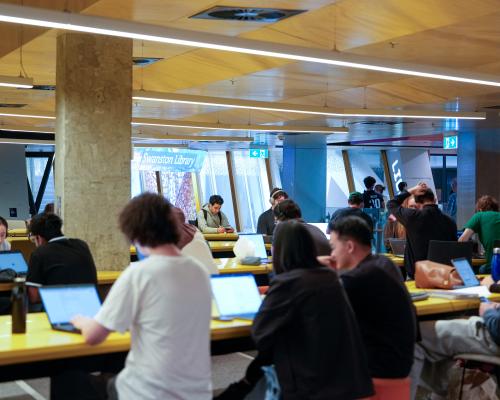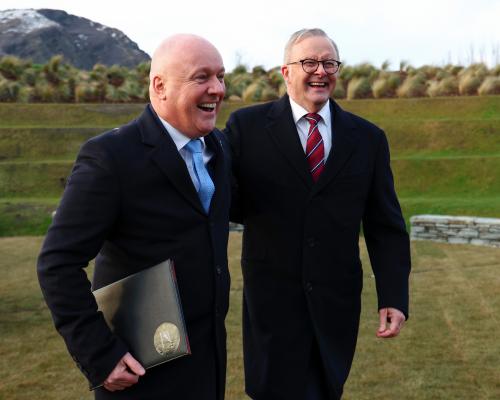
Last year, amid partisan debate over international student numbers, Universities Australia accused both sides of parliament of using the tertiary sector as a “political plaything”.
Fast forward to 2025, and the federal government has back flipped on its plan to cap foreign student entries, announcing last week that it would increase places by 25,000 next year. The opposition has also said it will adopt a more “sensitive approach”.
So was the election campaign rhetoric just hot air? And will the cap ever be revived?
What’s changing with the number of international students?
From next year, the international education sector will be allowed to grow by 25,000 additional places compared with 2025 and all providers will receive at least their current allocation of students.
After the commonwealth’s proposed international student cap – which would have limited new enrolments in 2025 to 270,000 – failed to receive Coalition backing, the National Planning Level for 2026 was set at 295,000 international places.
The education department said that was 8% below the post-Covid peak in 2023, and that international student levels for 2025 were “broadly on track” for the current planning level of 270,000s.
Sign up: AU Breaking News email
Public universities will be able to lobby for higher individual allocations by demonstrating “increased engagement” with Southeast Asia, in line with the government’s priority to “deepen engagement in our region”, or by providing additional student accommodation (the initial purpose of the proposed cap was to free-up housing).
“Strategically important” cohorts including Pacific and Timor-Leste students and scholarship holders will continue to receive high-priority visa processing, and some students, including those moving from Tafe institutes to public universities, will be exempt from the planning level.
The minister for home affairs, Tony Burke, said the changes would ensure student visa processing supported “genuine education outcomes” and strategic priorities.
“This is about backing providers who do the right things and giving them the certainty they need to grow sustainably,” he said.
How did the international student system work before?
The federal government replaced its failed international student cap by slowing visa processing, a move the former deputy immigration secretary described as “political point scoring”.
The new Ministerial Direction 111 (MD111), rolled out in late 2024 introduced two categories of student visa processing: “high priority” and “standard priority”, instead of capping numbers.
All international providers received high priority processing up to 80% of their indicative cap, with slower processing after this. Prior to that, Ministerial Direction 107 (MD107) was employed as an arbitrary cap that gave visa processing priority to “low risk” sandstone universities and students from “low risk” nations, disproportionately affecting applicants from south Asia and regional universities.
The education department said MD111 would be replaced with an updated ministerial direction later in 2025 to “manage student visa prioritisation in line with the 2026 allocations”. It will continue the principles of MD111.
Is this a long-term solution to the international education system?
The international education sector will be continue to be heavily regulated by the government.
From 2027, the new Australian Tertiary Education Commission will manage higher education growth, subject to legislation passing, indicating there will not be a shift back to a market-led approach.
For the international Vet sector from 2027, the federal government will continue to use visa processing and integrity reforms to direct the proportion of international students.
The education minister, Jason Clare, said the sector was an “incredibly important export industry” that had to be expanded sustainably. “The new planning level gives the sector certainty to continue delivering a high-quality educational experience to international students, while addressing national priorities.”
The next step is for the government to meet its 2026 target. Andrew Norton, a higher education policy professor at Monash University, said that despite the modest reforms, other migration policies in place to block or deter international students could mean the actual number falls short of 295,000.
Norton noted in the Conversation that the successive migration policies had particularly decimated offshore demand for vocational education, which dropped by 75% in the first six months of 2025 compared with 2023.
How has the international education sector reacted?
After consistently calling for growth in the international student market, Universities Australia’s chief executive officer, Luke Sheehy, said the government’s approach was “sensible” and would provide “stability and certainty”.
“We’ll continue to work constructively with the government to strengthen the integrity of the sector, including the design of a new ministerial direction,” Sheehy said.
International students have welcomed the changes, but warned the government needs to go further to lure students back.
International officer at the Council of Australian Postgraduate Associations (CAPA), Weihong Liang, said international education needed a “reset” towards student welfare and support, “instead of the constant rhetoric around the revenue they bring in”.
He pointed out international student visa fees almost tripled since 2023, from $710 to $2,000 – and not were not directed towards university services or funding for accommodation.
“Experiences of perceived unfair treatment have lasting impacts, potentially affecting Australia’s international relationships, educational partnerships and economic opportunities far into the future,” Liang said.
Are Australia’s international student wars over?
Deputy Greens leader and higher education spokesperson, Senator Mehreen Faruqi, said during the election campaign that international students had been used as a “political football”.
“Blaming international students for the housing crisis was pure racist dog-whistling and a far cry from reality,” she said.
“Australia’s reputation was trashed by Labor’s politically motivated international student caps and high visa fees, with students turning away and university rankings declining.
“Now Labor is trying to crawl back on their reckless international student caps but still without a rationale or a long-term plan to address [this] crisis.”
The Coalition has also toned down its messaging. The opposition’s education spokesperson, Jonathon Duniam, walked away from his party’s call for Australia to slash 80,000 international student places, promising a more “sensitive” approach this term.
He said tertiary providers needed clarity on how the target was chosen, “while ensuring that there are no losers”. “Regional universities and high-quality specialist providers should not be swept up in a one-size-fits-all approach,” he said.
“We will work with tertiary sector to get this right.”






